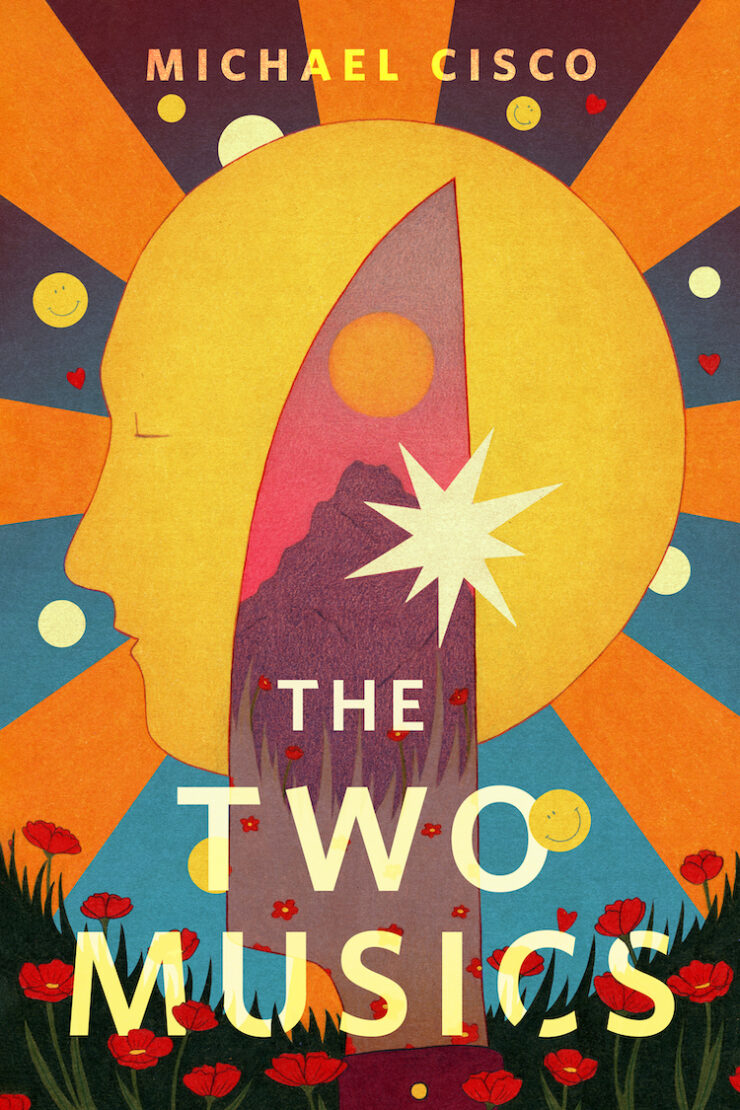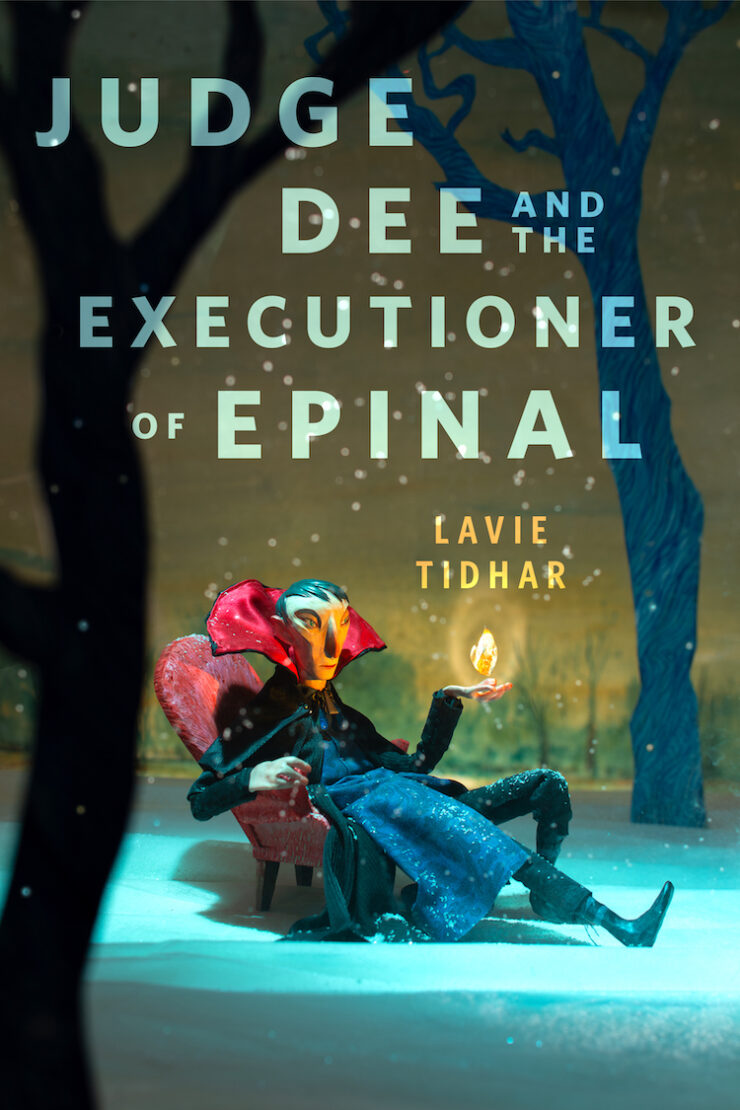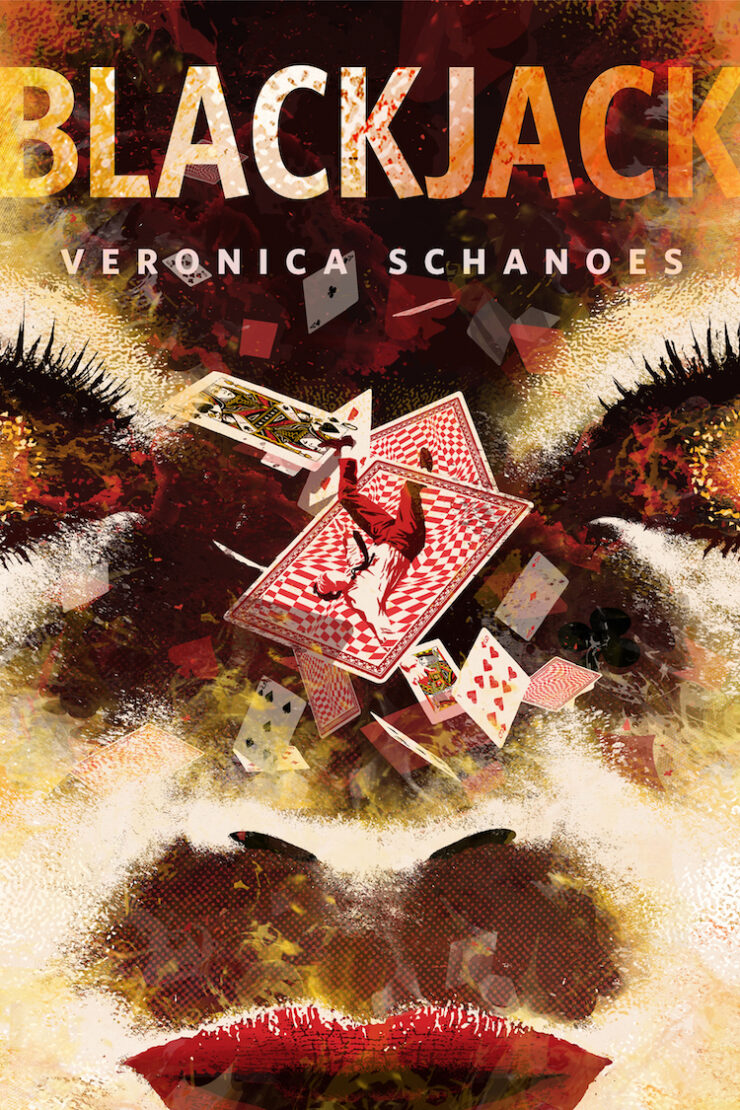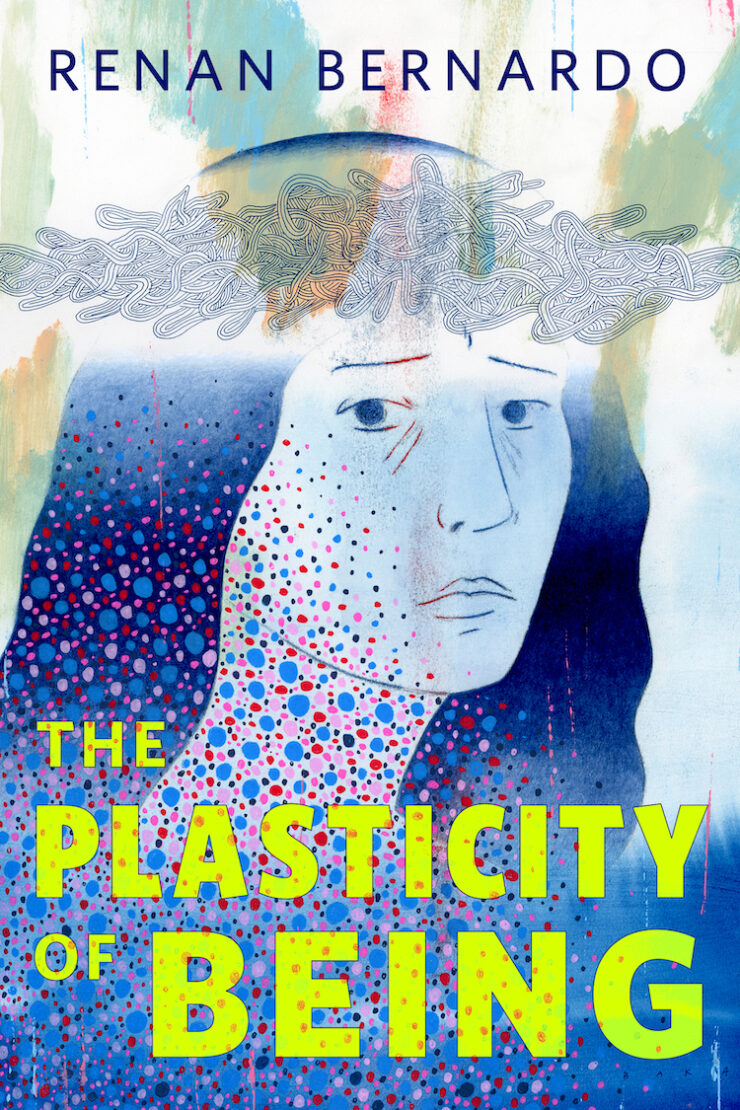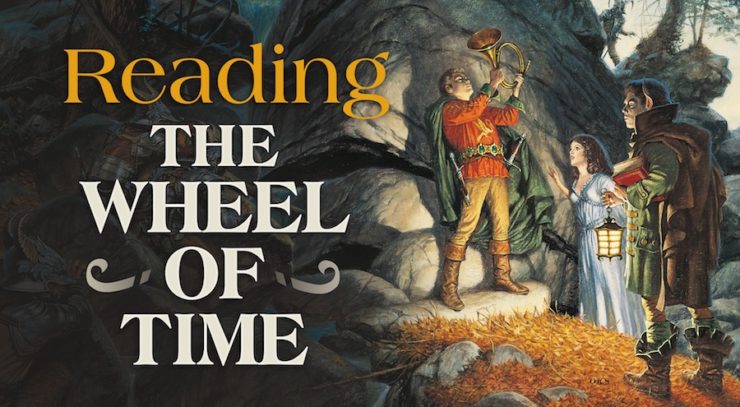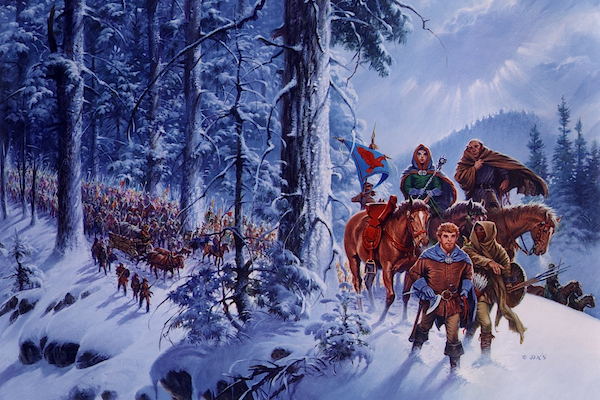Two packed chapters await us this week in the third installment of the Reading of The Great Hunt. We begin to see the machinations of Tar Valon, and how they are not nearly as united as the people outside the Tower might assume, learn more about politics, and witness several characters sneaking off on their own agendas.
I am very excited to see chapters from Moiraine! It’s different to see part of this story from the perspective from the character who, at least so far, seems to have the most knowledge of what is going on. It was also interesting to watch Jordan manipulate his close third person narration in order to show us Moiraine’s thoughts without giving too much away, and it was very interesting to discover that she and the Amyrlin have a secret plan that no one knows about.
Speaking of the Amyrlin, it took me awhile to make sense of the fact that the office is called the Amyrlin Seat, and that the woman who holds the office is also called the Amyrlin Seat. Calling her the Amyrlin makes sense, but it seems weird to call a person “seat.” I suppose it would be like calling a King or Queen “the throne,” and it does put the focus more on the office than it does upon the person. So perhaps that’s the point; to recognize the office and its duties rather than elevate the person holding it.
In her rooms, Moiraine is dressing in her formal Aes Sedai shawl, which bears the white teardrop emblem of the Flame of Tar Valon and fringe denoting the color of the wearer’s Ajah; blue in Moiraine’s case. She is worried and angry, uncertain why the Amyrlin would have come all this way and concerned about who else she might have brought, and what effect that might have on Moiraine’s plans. There is a knock at the door, and after composing herself and making sure her expresion doesn’t give her away, Moiraine greets two other Aes Sedai, Anaiya, also a Blue Ajah, and Liandrin, who wears Red. Anaiya is happy to see Moiraine, but Liandrin is short with her and complains that Moiraine’s room is warded against their entrance. Moiraine explains smoothly that she didn’t want Shinarian servants messing with her things, and since there were no other Aes Sedai around she didn’t need to think about making an exception for her “sisters.”
Buy the Book
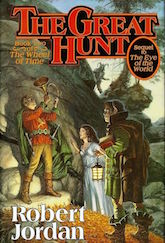

The Great Hunt
Moiraine has been summoned by the Amyrlin Seat and the three women proceed down the corridors of the women’s apartments, curtsied at by servants as they go. They discuss the fact that three more False Dragons have appeared, and although Liandrin is dismissive, Moiriane reminds her of the destruction that such men can wreck. Aes Sedai died stopping Logain, after all. They stop to talk to the Lady Amalisa, greeting her warmly and encouraging more familiarity than Amalisa intends to treat them with. She invites the three Aes Sedai to visit her gardens, and Moiriane is surprised when Liandrin—who is never very friendly with other Aes Sedai, let alone those outside the White Tower—accepts, Moiraine wonders what the red sister is up to.
As they continue on, Anaiya keeps telling Moiraine the news, how the unrest in Caemlyn has settled with the arrival of spring and how Elayne and Gawyn have arrived safely in Tar Valon, despite having been followed by the Children of the Light for the duration of their journey. They discuss the long tradition of sending the future queens of Andor to study at the White Tower, and how much power Elayne has. Moiraine thinks about how Elayne’s gifts must be kept a secret, that people are already suspicious of Morgause for being trained in and connected to Tar Valon, and that if the people knew Elayne will be a full Aes Sedai they would never accept her. Anaiya also mentions that he Hunt for the Horn has been called in Illian, and that both the Sea Folk and the Aiel are restless, and that there are rumors of fighting on Almoth Plain. When Moiraine tries to theorize on that, Liandrin snaps at her and reminds her that the Amyrlin is waiting.
Moiraine observes the Aes Sedai who accompanied the Amyrlin to Fal Dara; Brown Sisters who are concerned with seeking knowledge, as well as women in Yellow, White, and Green. Moiriane says hello to them, but they don’t reply back, and she feels her anxiety heighten. She is greeted by Leane, the Keeper of the Chronicles, who escorts her in to see the Amyrlin.
Moiraine greets the Amyrlin, Siuan Sanche, formally, calling her Mother and being called Daughter in return. She is startled to see that the Amyrlin already has the gold cube that Moiraine and her companions recovered from the bottom of the Eye of the World, despite the fact that Moiraine had left it under the protection of Lord Aglemar. The Amyrlin tells Moiraine of how they summoned wind and tied to travel faster to Fal Dara, no doubt flooding crops and leaving destruction and strange weather in their wake. She says that that Elayne and Elida, the Aes Sedai advisor to Queen Morgause, are in Tar Valon, and that the Red Ajah are very proud and excited to have been the Ajah who discovered Elayne, who may be the most powerful Aes Sedai in a thousand years. This gains the Red Ajah much status and influence, even if Elayne does not choose Red for her Ajah when the time comes.
Moiraine answers by telling the Amyrlin about Egwene and Nynaeve. She compares Egwene’s abilities as equal to Elayne’s own, and suggests that with proper training, Nyneave’s power will outshine them both. But she is surprised that the Amyrlin seems unaffected by this news; the numbers and strength of the Aes Sedai have been long dwindling, to find three girls with such power in so short a time is a big deal. The Amyrlin instead focuses on the news she received from Elaida, that Moiriane is meddling with a young man who is ta’veren, that Elida encountered him in Caemlyn but by the time she discovered the inn where he was staying, Moiraine had “spirited him away.” Elida said that the boy was more dangerous than Artur Hawkwing, and because she has the ability to Foretell, those words carried a lot of weight. Two Green sisters even proposed that Moiraine be sent away on a retreat as punishment, a fact that is very surprising given the long alliance between the Green and Blue Ajahs, and the suggestion from the Greens that the Red Ajahs be responsible for Moiriane’s care during that time. Even more shocking is the way that they spoke to the Amyrlin, debating the presence of other Blue Ajah on the voyage, since Leane is of the blue and the Amyrlin was once blue, and even suggesting that she might not be allowed to go at all. This is a shocking thing, since the Amyrlin is understood by all to be of no Ajah, and to speak for all Aes Sedai and all Ajah. Things are changing.
The Amyrlin then sends Leane away, an unusual move, but the Keeper complies. The Amyrlin weaves a ward around the room to protect against eavesdropping, and then drops all the formality and embraces Moiraine, remembering their time together as novices and saying how good it is to have someone who still remembers who she was before she became the Amyrlin Seat. But then things turn serious again.
“Moiraine, if anyone, even Leane, discovers what we plan, we will both be stilled. And I can’t say they would be wrong to do it.”
Just hearing the word is enough to make Moiraine shiver, thinking of what it would be like to have her ability to touch saidar striped from her. Still, she reminds the Amyrlin that what they are doing is what they know must be done, what they have known must be done for twenty years, what the Pattern demands of them, and the Amyrlin agrees, although she muses on the danger of being stripped of her office, and points out that things would be easier if Moiraine had stuck to their original plan, to find the boy, bring him to Tar Valon, keep him safe and guide him.
“Nearly twenty years of planning and searching, and you toss all our plans practically in the Dark One’s face. Are you mad?”
Now that she had stirred life in the other woman, Moiraine returned to outward calm, herself. Calm, but firm insistence, too. “The Pattern pays no heed to human plans, Siuan. With all our scheming, we forgot what we were dealing with. Ta’veren. Elaida is wrong. Artur Paendrag Tanreall was never this strongly ta’veren. The Wheel will weave the Pattern around this young man as it wills, whatever our plans.”
The anger left Amyrlin’s face, replaced by white-faced shock. “It sounds as if you are saying we might as well give up. Do you now suggest standing aside and watching the world burn?”
“No, Siuan. Never standing aside.” Yet the world will burn, Siuan, one way or another, whatever we do. You could never see that. “But we must now realize that our plans are precarious things. We have even less control than we thought. Perhaps only a fingernail’s grip. The winds of destiny are blowing, Siuan, and we must ride them where they take us.”
Shaken, the Amyrlin takes the Horn of Valere from the gold box and reads the inscription aloud, remarking on the fact that prophecy said that it would only be found just in time for the Last Battle. She tells Moiriane that Aglemar was eager to get it out of his possession, saying the temptation to use it was too great. The Amyrlin expresses surprise that the Last Battle could be so close.
“The Karaethon Cycle.”
“Yes, Moiraine. You do not have to remind me. I’ve lived with the Prophecies of the Dragon as long as you.” The Amyrlin shook her head. “Never more than one false Dragon in a generation since the Breaking, and now three loose in the world at one time, and three more in the past two years. The Pattern demands a Dragon because the Pattern weaves toward Tarmon Gai’don.
Moiraine reminds the Amyrlin that the Pattern throws up false Dragons because it demands a real one, the Dragon, but that one he proclaims himself the creation of False Dragons will cease, and that is how they know, for example, the Logain is not the Dragon. She shows the Amyrlin the cuendillar seal, bearing the old Aes Sedai symbol sued when men and women still wielded the Power together. One of the seals on the Dark One’s prison, over which the Amyrlin was supposed to watch, although the secret the Aes Sedai keep is that no Amyrlin knows where the seals actually are. She admits that she noticed Rand in the courtyard, that seeing ta’veren is one of her gifts. To her eyes he blazed like the sun and she was filled with fear. Moiraine promises that he is the one, that he can wield the Power, and that he will stand up in front of the world as the Dragon Reborn.
Moiraine explains her new plan to the Amyrlin, how she has left Rand alone, feigning disinterest in him lest he stubbornly resist her. She plans to ask Perrin and Mat to carry the Horn to Illian, after the Aes Sedai rid him of his link to the Shadar Logoth dagger, and she suggests that Rand would be happy to get away from Aes Sedai and stay with his friends for a little longer before his fear of his power drives him from them. She will ensure their safe travel from a distance, and see to it that Illian is ready for Rand’s arrival. When the Dragon arrives carrying the Horn and proclaims himself, the people of Illian and most of the others gathered for the Hunt will be more than ready to follow him.
The Amyrlin has many more questions but Moiraine reminds her that people will be suspicious if they talk for too long, and promises to contrive another meeting at a later time. She also thinks, privately, that there are things she can’t tell even her dearest friend, and cannot risk the Amyrlin knowing that she is holding things back. They part, and Moiraine does her best to look like she has received a harsh scolding as she passes the other Aes Sedai. She can’t quite managed stunned regret, but anger looks almost as well.
The narrative shifts to Captain Geoffram Bornhald, who is riding with his men to a mystery meeting in a town at the edge of Tambor after being ordered to do so by Pedron Niall, Lord Captain Commander of the Children of the Light, in Amador. Captain Bornhald was not able to learn much about who he has been sent to meet or why, but he was instructed that the journey had to be completed with complete secrecy, and Bornhald is proud that he managed to move two thousand armed and mounted Children without being spotted by any innocent bystanders who would have to be killed to ensure their silence.
Bornhald is startled learn that he men he was sent to meet are Questioners, Children of the Light who use torture to extract confessions from suspected Darkfriends. But Bornhald is one of those who believes that the Questioners decide the guilt of a person before the questioning even begins, and he is displeased by it. He is invited into the village, learning that it has been “pacified” which means, Bornhald knows, that everyone living there has been killed. He is told that there are strangers on Toman Head with a great force, rumored to be monsters, or Aes Sedai, or both, and that the Children are here to bring this area under the Light. Bornhald seems to think that this means that Artur Hawkwing’s armies have returned, but the Questioners are unmoved and he is ordered to see his men settled in the camp. He thinks to himself that they are being used like stones on a board, but he has no idea who is moving them, or why.
Back in Fal Dara, Liandrin shows up unexpectedly in the Lady Amalisa’s chambers. She finds the women reading to each other from a book about courting, and she barges in and throws everyone out to speak to Amalisa alone, then tells the woman off about the dangers of falling into Shadow, even if one believes themselves to be walking in the Light. Amalisa is frightened and thrown off guard, and Liandrin presses this, reminding Amalisa that she is of the Red Ajah, one who hunts men who have been corrupted, not only those who wield the Power but any who have been corrupted, both lowborn and high. Amalisa, inferring that she might be speaking of her brother, Agelmar, throws herself to her knees in panic, pleading that it might be different. In her moment of fear and confusion, Liandrin strikes out with the One Power, exerting a subtle influence that helps bend Amalisa, unbeknownst to herself, to Liandrin’s will.
This was her own special trick from childhood, the first learned of her abilities. It had been forbidden to her as soon as the Mistress of Novices discovered it, but to Liandrin that only meant one more thing she needed to conceal from those who were jealous of her…
It was not a perfect ability; Liandrin could not force anyone to do what she wanted—though she had tried; oh, how she had tried. But she could open them wide to her arguments, make them want to believe her, want more than anything to be convinced of her rightness.
She tells Amalisa that the three boys Moiraine brought to Fal Dara are very dangerous, worse than Darkfriends, and commands her to have all her servants search the Keep for them. She learns about Padan Fain, and she tells Amalisa that the tales of the Black Ajah are true, so she must speak of this encounter to no one, even Moiraine or another Aes Sedai.
As she leaves Amalisa’s chamber, Liandrin feels as though someone is watching her, but when she sees no one, dismisses it as her imagination. But down in the dungeon, Padan Fain is waiting. The door opens, and he recognizes the figure outlined in the lamplight. His deliverer is not who he expected, but that does not matter, and he grins up at the ceiling, at something “unseen yet felt” and whispers that the battle is never over.
Unless I’m forgetting something, I think this is the first time a the narration has split perspectives within a single chapter. There’s a heck of a lot of set-up here, and the running theme of all three different sections seems to be the maneuvering of certain people into certain positions as part of the greater game. It’s most obvious with Liandrin, who I guess is probably one of those Aes Sedai that Bors noticed in the prologue. She knows a lot about Mat, Perrin, and Rand, and is hunting them with a specificity that I think suggests that she was given the command to do so, rather than out of her own curiosity or desire to undermine Moiraine, or something like that. Her attitude of superiority and status also suggest a Darkfriend’s particular perspective, wanting good people and noblewomen like Amalisa to have to kneel to her, etc. Although I’m sure they don’t have a monopoly on haughty classism in this world.
I wonder if there is an Ajah that is more likely than the others to become Black. I suppose it’s easy to be suspicious of the Red because we know that they are responsible for hunting down and gentling men with the Power. That makes them enemies of our heroes, of Thom Merrilin and Rand especially. And it suggests a bloodthirstiness, I think, through the choice of color and the willingness to do something that results in such pain, even though it is deemed necessary by all Aes Sedai. And then there is the conflict between the Red and the Blue. The reader mostly trusts Moiraine, and the suggestion that the Red Ajah want to have control over her punishment is a chilling one. Even worse is learning that women are also sometimes stripped of their power; the Aes Sedai are a dictatorship, it would seem; there are no opposing institutions presenting different rules or ideas, and even if stilling is a last resort used only on the truly bad, it does throw a bit more shadow on the already distrusted Tar Valon.
Buy the Book
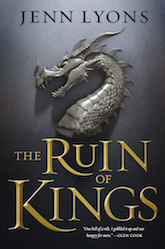

The Ruin of Kings
I do wish the narration would just tell me the full difference in the classification of the Ajahs already; we now know the Brown is about the pursuit of knowledge, and we have some sense of the Blue’s priorities based on Moriaine’s, but the Yellow, Green, and White are still a mystery, and it makes it harder to ferret out how the White Tower works. But I suppose that reveal will continue to come, slowly, as the books progress.
And I have been given an awful lot in this section. One assumes in the first book (or at least I did) that Moiraine was acting alone when she left Tar Valon and went in search of the Dragon Reborn off in the outskirts of a town most people paid no heed to at all. Now we find out that she had an ally in her plan, a powerful one, but one who cannot move and scheme without being noticed. This revelation also throws more light on the importance of Moriaine’s decision to turn their journey aside in The Eye of the World, when she learns of Ba’alzamon’s plans to move against it. She wasn’t just taking the boys to Tar Valon because that seemed the obvious move, but because there was a specific plan to hide him there with the Amyrlin. Her choice shows, as she points out to the Amyrlin, how much effect the ta’veren presence has on events, and also, I think, just how desperate Moiraine’s plan was to begin with. There is a suggestion here that the prophesied return of the Dragon is more of a set of instructions than a prediction of what will happen with or without interference, and a more direct acknowledgement of the cost that will come with the arrival of the Dragon. It has been said or implied before in The Eye of the World that the Dragon’s coming portends doom and destruction, perhaps the end of the world itself, but it’s unclear to me exactly what that means. It’s almost put forth like a sort of end-time event, in which the world will be destroyed either way, but one way ends in the coming of evil and darkness, and the other end is in the arms of the Light. Or perhaps it just means the end of an Age, in which those who lived through it will be all or mostly destroyed but life itself will continue on. Right now it’s hard to say.
It’s also hard to say what the Amyrlin meant when she said that the Pattern demands a Dragon, and so it spits out false Dragons until the real one comes. I don’t understand how the Pattern would focus on the Dragon declaring himself, as though that is the first moment he exists, rather than the moment of his birth. Why should the Pattern create false Dragons if it has already created the real one? This raises a lot of questions for me about how the Wheel and the Pattern work.
I had suspected that Elyane had the ability to channel, although I’m not exactly sure why. Perhaps because her interest in healing seemed at odds with her destiny to become Queen, perhaps something about her insight and interest in Rand. But I wasn’t surprised to learn that she will be a powerful wielder. I was surprised to learn that Moiraine believes Nynaeve to be much more powerful than either Elyane or Egwene; I had assumed Nynaeve was just older and therefore more experienced, but this is something else. I suspect Nynaeve will always keep her focus on healing, even when she goes to Tar Valon, but I am eager to see what else she chooses to do with her remarkable gifts. No wonder Moiraine thought she was important after she tracked them to Baerlon.
Both the Amyrlin and Captain Bornhald specifically mention stones on a board; the Amyrlin in reference to Elida’s view of those who are not either Aes Sedai or a specific threat, and Bornhald in reference to his own mysterious orders. I know from others’ comments that the series goes on to be quite full of plots within plots and political intrigue, and this seems to be the start of it.
Speaking of Bornhald, that guy is all proud that he didn’t “have” to kill anyone on his way to the rendezvous but his response to learning that an entire village was slaughtered was hardly enough in my opinion. The man believes in the Children and their mission to wipe out Darkfriends enough to blindly follow orders he doesn’t like and doesn’t understand, to fall in line with Questioners, who he believes do their job incorrectly, stupidly, and maliciously, and to put aside the deaths of a whole village of innocent people in, one supposes, the pursuit of the greater good. He may be trying his best to not harm innocents, but in some ways that hypocrisy bothers me more than the other Children who just don’t really care about anyone.
Also can I just remark upon how many “nice” words the people in power have for horrible deeds. The village was “pacified,” male channelers are “gentled” and misbehaving Aes Sedai women are “stilled.” I suppose the people of this world know well the power of words; they don’t say the Dark One’s name, for example, and both nobles and Aes Sedai are well aware of how to play the game of information. Although everyone knows basically what the gentling of men actually is, no doubt the softness of saying the word makes the fact a little bit easier to swallow. Easier to look away from. At least for those in no danger of being gentled themselves.
Next week we will cover Chapters 6 and 7, in which we will see a battle and Rand face a lot of questions, and Lan giving advice, and who knows what else. I haven’t finished reading them yet. See you next week, or down in the comments!
Sylas K Barrett would very much like to know more about Liandrin’s specific speech pattern and can’t wait to see what Padan Fain gets up to next. And by that I mean he knows it’s gonna be bad.


